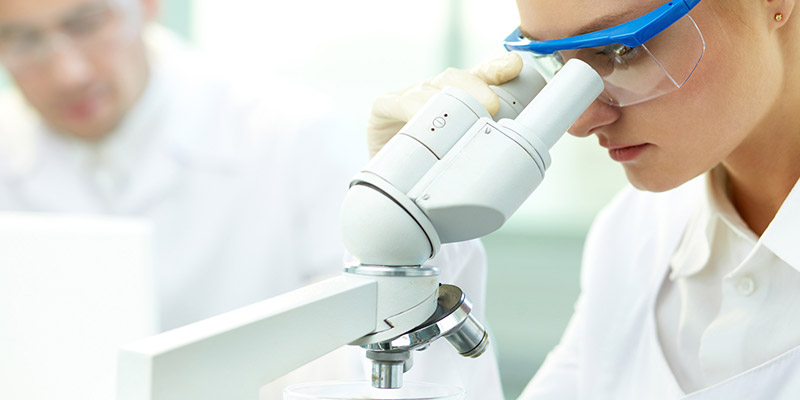Advancements in life sciences has brought us amazing developments, for example, high-throughput and personally affordable genomic sequencing and cutting edge techniques like flow cytometry that can simultaneously phenotype distinct cells for their expression of dozens of biological markers. The advancement of cutting-edge technology solutions with standardized workflows has prompted expanded productivity and unwavering quality for these and other cell-based methods.
Understanding how cells in the native tissues they form, are changed in disease states is an important undertaking and unfortunately, is one that has seen relatively little in the way of breakthrough technology development in last few decades. Understanding how cluster of cells in the tissue they form, getting altered in disease conditions is a significant endeavor and unfortunately, is one that has witnessed moderately little in technology development in recent decades.
Traditional, tissue histology technique involves an array of laboratory hardware in which samples after being embedded in paraffin are sectioned into thin slices. The tissue ‘slices’ are then mounted onto glass slides and the paraffin is removed. The prepared slides are labelled with appropriate stains and /or antibodies and viewed using a microscope.
Recent advances in imaging technology have enabled analysts, laboratory & health professionals to store microscopic images. Similarly, improvements in fluorescence recognition methods have facilitated automated analysis for signals of interest. Cutting-edge technologies involving confocal microscopy and 2-photon excitation has made it possible to extract valuable information from extremely thin slices and fairly bigger tissues
Recent advances in imaging technology have enabled analysts, laboratory & health professionals to store microscopic images. Similarly, improvements in fluorescence recognition methods have facilitated automated analysis for signals of interest. Cutting-edge technologies involving confocal microscopy and 2-photon excitation has made it possible to extract valuable information from extremely thin slices and fairly bigger tissues
In the past few years, tissue processing techniques have been greatly revolutionized. Today, Trivitron offer a suite of histopathology equipment that are highly efficient and guarantee error free results.
- Accu-Edge®Grossing Stations come in various configurations and are of great built. Available in four different models with over 40 optional accessories, Accu-Edge® Grossing Stations offer maximum flexibility to meet your laboratory’s need.
- The Tissue-Tek®Xpress® x120: Continuous Rapid Tissue Processor is a self-contained tissue processor employing microwave and vacuum infiltration techniques. The instrument performs automatic rapid processing (fixation, dehydration, clearing, and paraffin impregnation) of tissue specimens in preparation for histological study and examination.
- Tissue-Tek®VIP 6 AI: The Tissue-Tek VIP 6 AI Vacuum Infiltration Processor is a self-contained, floor-standing, automatic, tissue processor, used to process tissue specimens.
- Histo-tek VP1: It automatically performs in a single processing retort, a series of tissue processing steps including fixation, dehydration, defatting and paraffin infiltration, to prepare pathological samples for histological studies and tests conducted in the fields of pathology, anatomy and/or clinical pathology.
- Tissue-Tek® TEC 6® : The Tissue-Tek® TEC 6® Embedding Console System, is designed to be the ideal tissue embedder for laboratories of any size, the robust and ergonomic modular system offers a streamlined, adjustable workflow that is comfortable and simple-to-use for any user.
- Tissue-Tek®AutoSection®: The Tissue-Tek AutoSection® is designed for the purpose of sectioning human and animal tissue specimens which are suspended in a paraffin block. The instrument, as part of the histopathology process, is intended to facilitate in vitro examination of human and animal tissue for morphology changes by a pathologist.
- Accu-Cut SRM 200: Accu-Cut®SRM™ 200 is Perfect partner for precision sectioning. The Accu-Cut® SRM™ 200 Rotary Microtome is a heavy duty rotary microtome designed for sectioning of paraffin embedded specimens.
- Staining® & Coverslipper: Tissue-Tek Prisma®Plus & Film® HQ enables optimized and consistent high quality routine and special staining. With quality controlled and ready-to-use H&E staining kits laboratories ensure slide-to-slide consistency. This results in crisp images with clear morphological and nuclear detail.
- VisionTek®: VisionTek®digital Microscope is used to visualize human and animal tissue placed on a microscope slide. VisionTek is a Live Digital Microscope with scanning capabilities.
- Tissue-Tek®Cryo3® Flex: It is a precision instrument used to freeze and section tissue specimens.
- Tissue-Tek® Cyto-Tek® 2500: The Cyto-Tek® 2500 Centrifuge provides optimal cell recovery and advanced preservation of cellular structure in non-gynecological monolayer slide preparation.
The 2500 was designed with enhanced features focusing on user safety, including the introduction of a new sealable rotor housing with lid which significantly reduces aerosol exposure.
Trivitron’s histopathology equipment offer researchers, healthcare practitioners and clinicians a new and valuable perspective on histology. These instruments are engineered to yield best outputs. With Trivitron’s range of histopathology instruments, you can not only simplify your workflow, but also take advantage of advanced technology with endless possibilities in healthcare and medical research.

